Batik is a well-respected, ancient art form and craft. It is a similar process used to make African print fabric but instead of using industrial printing machinery it is all done by hand!
The fabrics are used to make traditional African clothing as well as modern Afrocentric clothing, accessories and homeware.
Batik is a wax-resist dyeing technique that first began in Indonesia. A design is printed or drawn onto plain, cotton fabric using melted wax. The fabric is then dyed and the parts of the design, which are covered by the wax, are resisted.
After the wax has been removed the original background colour of the fabric is made visible where the wax previously was.
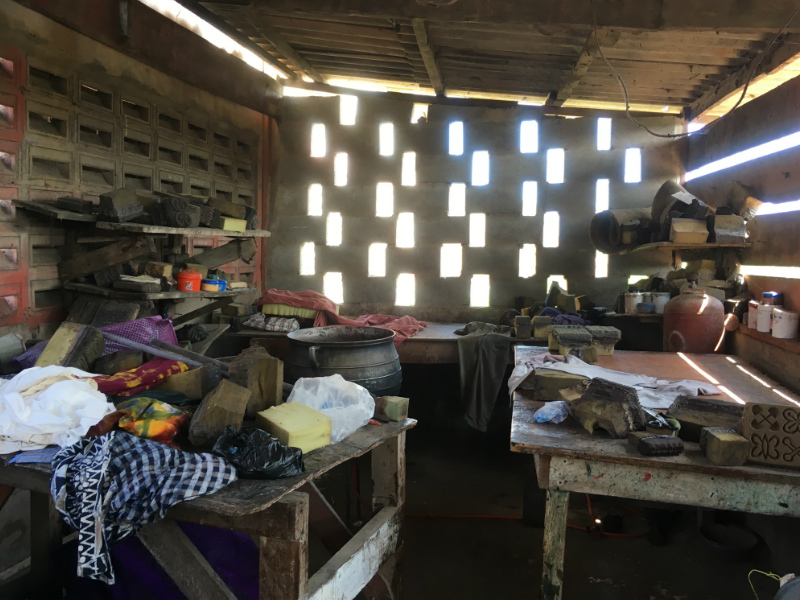
The batik making workshop that we visited in Ghana, West Africa
In the 19th century, English and Dutch merchants from Indonesia first introduced batik to Africa. Several African tribes, including the Yoruba from Nigeria, Wolof and Soninke from Senegal and Bamana from Mali, started to experiment with their own designs using mud, cassava starch and rice paste instead of wax to resist the dye.
Below are simple, step-by-step instructions explaining how the batik making process works in a small, family-run workshop in Ghana:
1) Melt the wax inside a large basin.
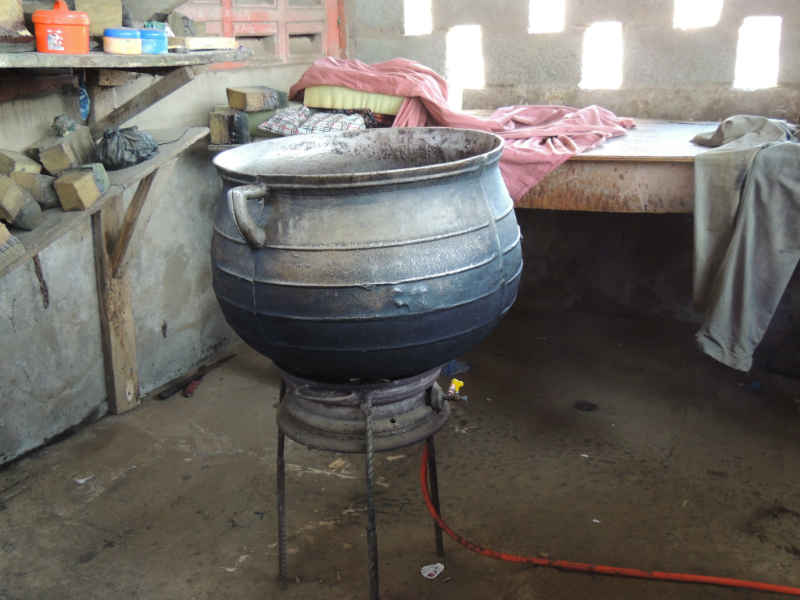
2) Carve the design onto a sponge block using a knife.
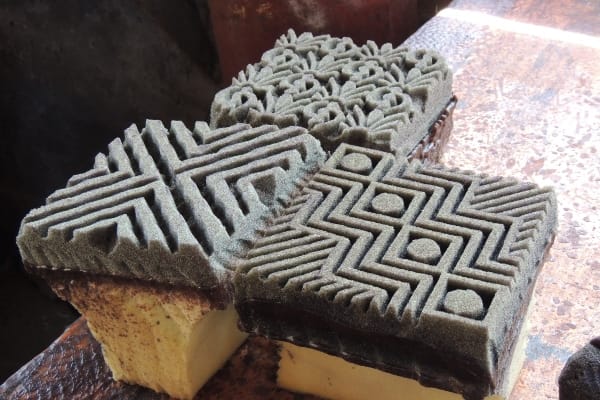
3) Dip the sponge block into the hot, melted wax and print it on top of 100% cotton, grey cloth (called ‘stamping’).
4) Put the whole fabric into the first dye bath to create the main background colour (usually the lightest colour).
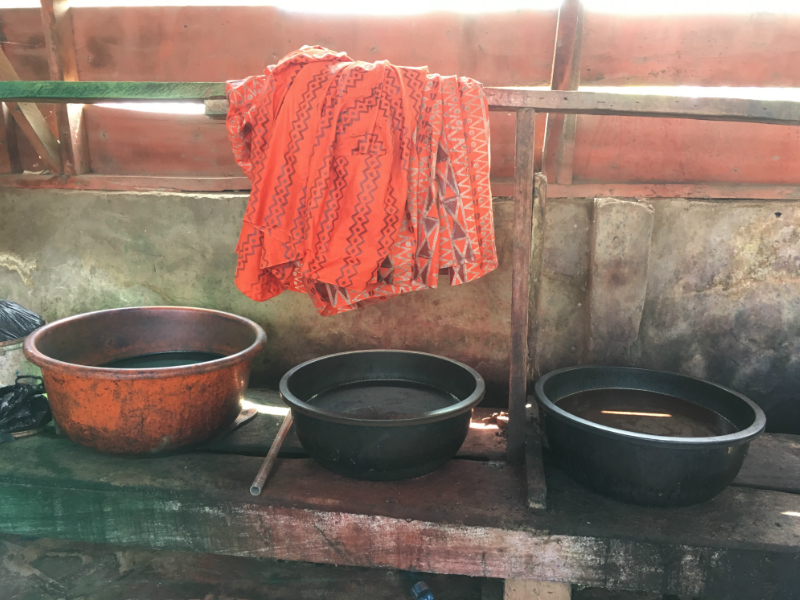
5) Dry the cloth outside.
6) Repeat the same stamping, dyeing and drying process to add additional design and colour to the fabric.
7) Remove the wax by dipping the fabric into boiling water as demonstrated by Daniel in the below video. This will remove some of the wax but not all.
8) Hand wash the fabric in cold water to remove all of the wax.
9) Dry the cloth outside.
Some examples of the finished designs!
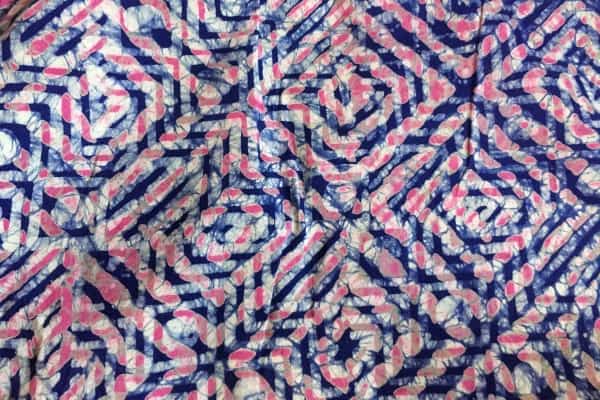

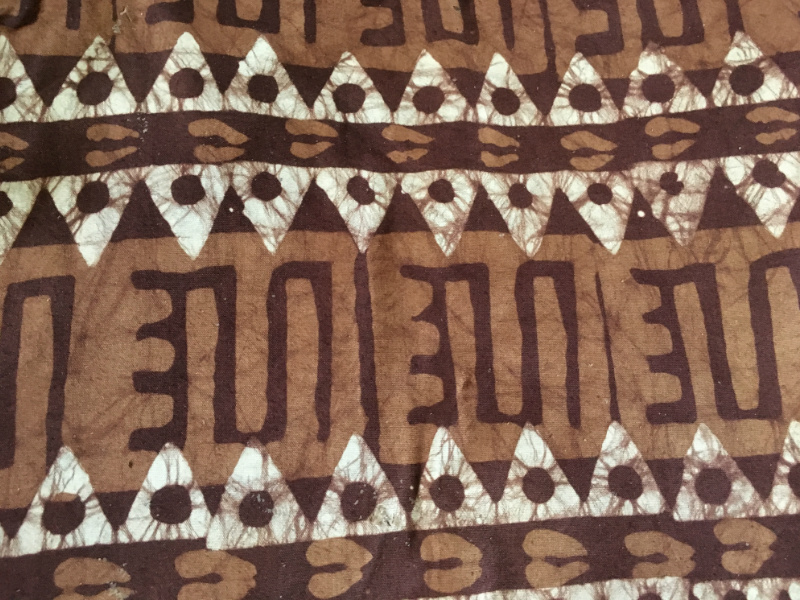
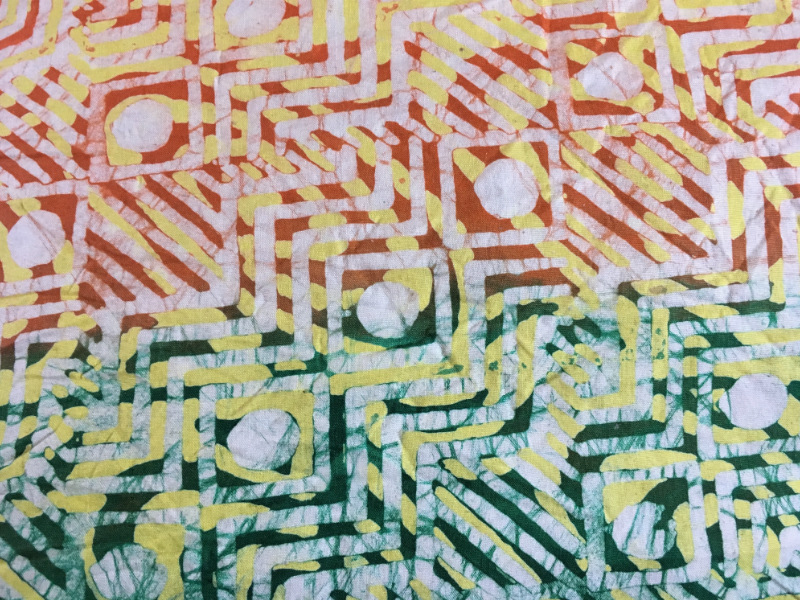
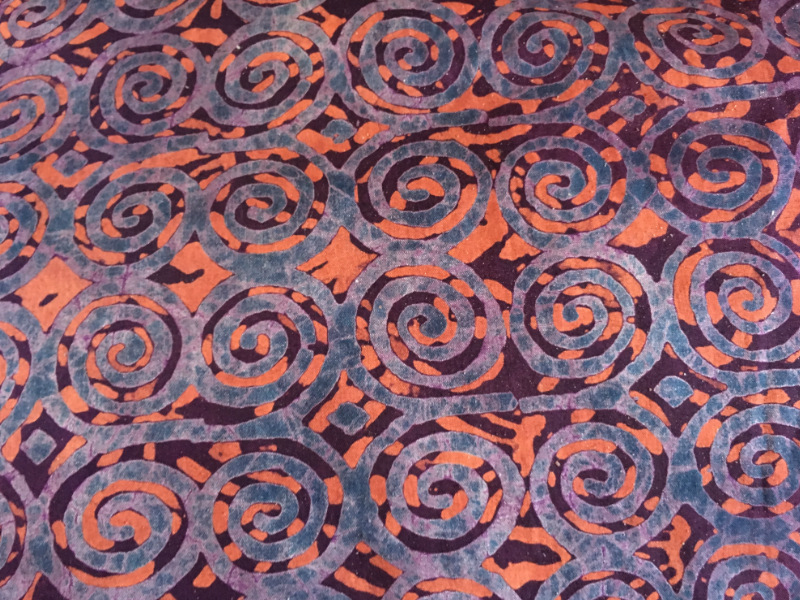
Sustainable Production
The wax is always recycled and used again to make new designs. The removed wax comes to the surface of the boiling water and is picked up using two small poles and put into a separate basin. It is then steamed to remove the water inside and is then ready to be melted again ready for printing.
This is also the case for large factories making African wax print fabrics as there would be huge waste otherwise. It is also much better for the environment to keep re-using the wax instead of dumping it afterwards.
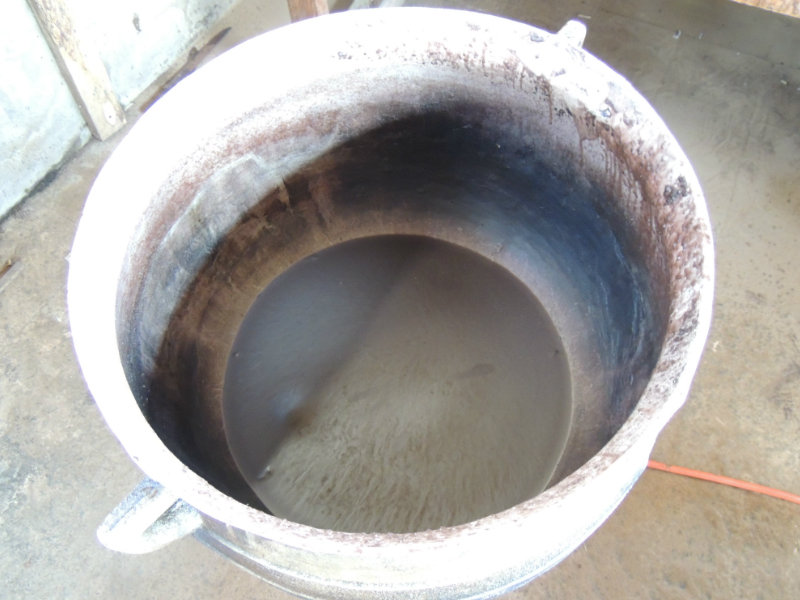
Dye Types
Either vat dyes (water-insoluble dyes such as indigo) or reactive dyes (chemical reaction) are used in the dyeing process. Vat dyes use stronger chemicals and the colour fastness is better when washed regularly compared to reactive dyes.
The common dye colours used for batik include: green, blue, yellow, brown, purple and indigo.
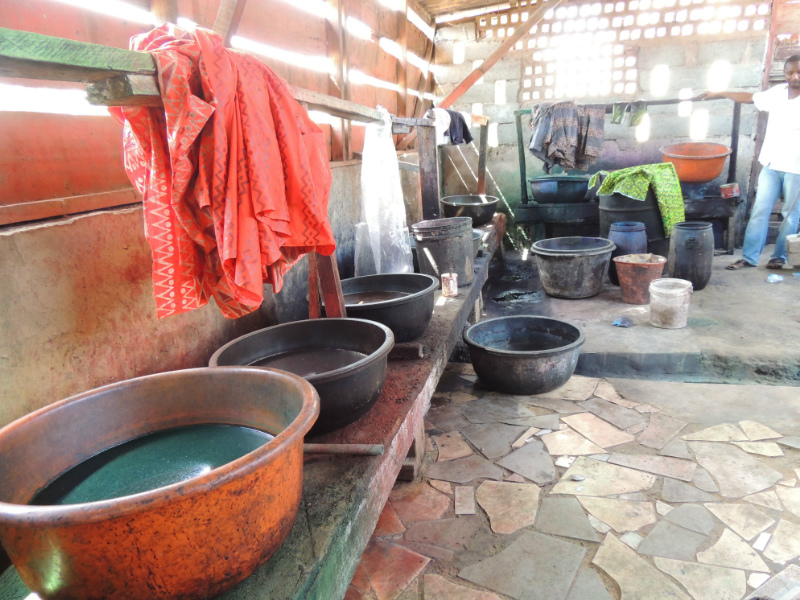
Different colour dye baths inside the workshop in Ghana
We hope you have enjoyed learning about the batik making process. To learn more about African print fabric please check out the articles below and sign up to receive our monthly newsletters. While you are here, why not also take a look at our African boutique online.
Further reading:
The Complete Beginners’ Guide to African Wax Print Clothing
African Wax Print Clothing – The Story Behind The Fabric
Everything you Need to Know About Kente!
Sign up to get 10% off your first order!
